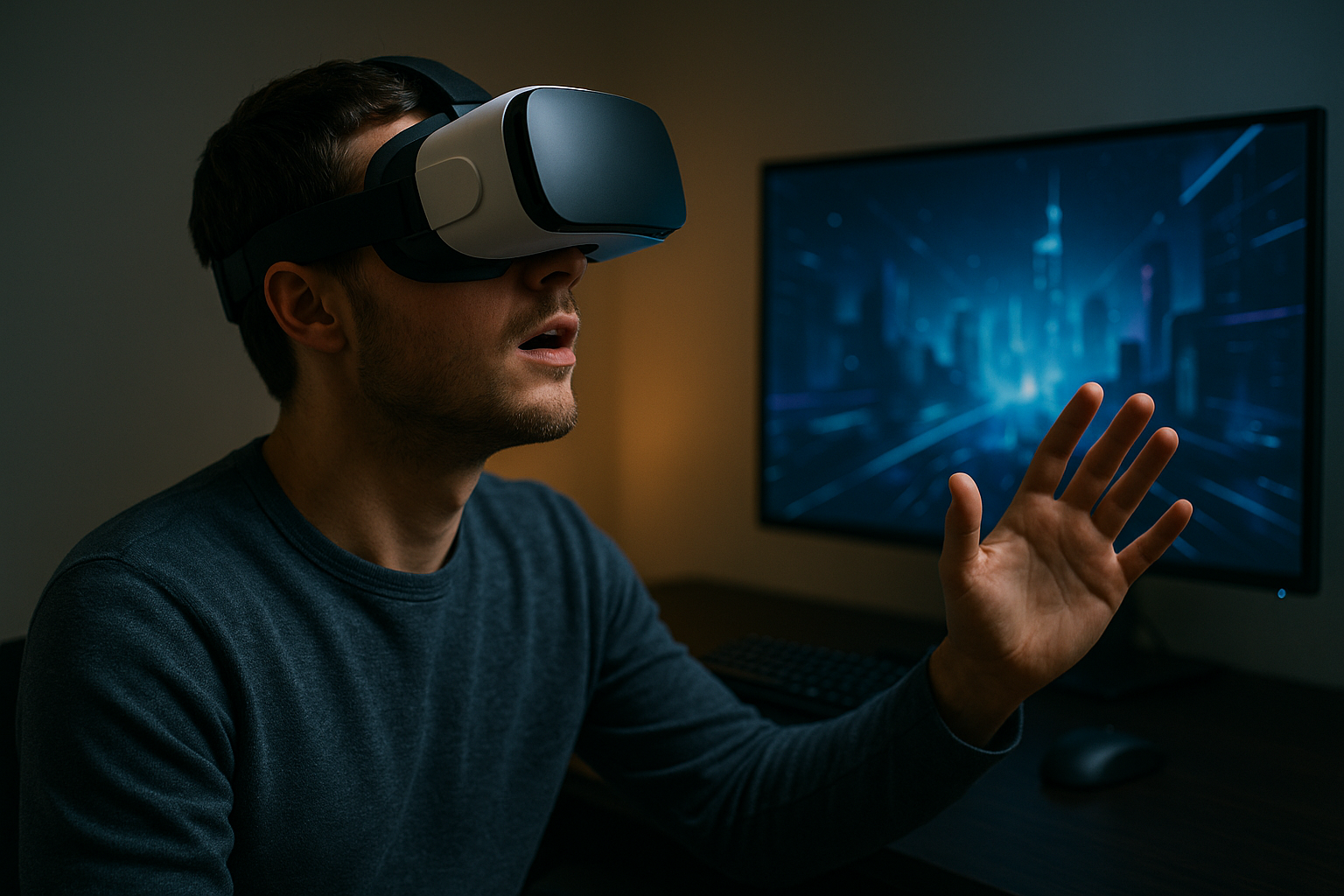"Virtual Reality: A Leap Beyond the Screen and Into the Future"
Virtual reality (VR) is no longer just a buzzword in the tech world. This groundbreaking technology, once the stuff of science fiction, is now a reality that's changing our lives in unimaginable ways. From gaming and entertainment to education and healthcare, VR is reshaping industries all around us. But how did we get here? And what does the future hold for this mind-bending tech?

A Glimpse into the Past: The Birth of VR
The concept of virtual reality has been around longer than you might think. While the term itself was coined in the 1980s by Jaron Lanier, a computer scientist and founder of the visual programming lab, the idea has been in existence since the 1960s. The first VR headset was created by Ivan Sutherland and his student Bob Sproull in 1968. Known as the “Sword of Damocles” because of its intimidating appearance, this device paved the way for the VR technology we know today.
VR: Today’s Marvel of Technology
Fast forward to the present day, and VR technology has evolved significantly. Modern VR headsets, like the Oculus Rift, PlayStation VR, and HTC Vive, offer high-resolution displays, wide field of view, and precise motion tracking. This immersive experience is further enhanced by the integration of audio and haptic feedback. From exploring the depths of the ocean to training medical students in surgery, VR is revolutionizing the way we interact with digital content.
Next-Gen VR: The Dawn of a New Era
So, what’s next in the realm of VR? The future looks promising, with technology giants like Facebook, Google, and Microsoft investing heavily in VR research and development. Standalone VR headsets, which don’t need to be connected to a PC or console, are becoming increasingly popular. These devices, like the Oculus Quest 2, offer unprecedented freedom and flexibility, making VR more accessible than ever before.
Moreover, the integration of AI and machine learning is set to take VR to new heights. These technologies will enable more realistic virtual environments and interactions, blurring the line between the virtual and the real world.
Market Impact and Price Range
As per market research, the VR market is expected to grow at a compound annual growth rate (CAGR) of 21.6% from 2021 to 2028. This growth is driven by increasing demand in gaming, entertainment, and education sectors, as well as the potential use of VR in teleconferencing and remote work.
In terms of pricing, VR headsets range from affordable options like the Google Cardboard (around $15) to high-end devices like the HTC Vive Pro (around $800). However, as technology progresses and competition intensifies, prices are likely to become more affordable in the future.
Wrapping Up: The Future is Virtually Here
Virtual reality has come a long way since the days of the Sword of Damocles. With advancements in technology and growing market demand, VR is set to become an integral part of our digital lives. So, buckle up and get ready for a thrilling ride into the virtual world. The future is virtually here, and it’s more exciting than we ever imagined.




